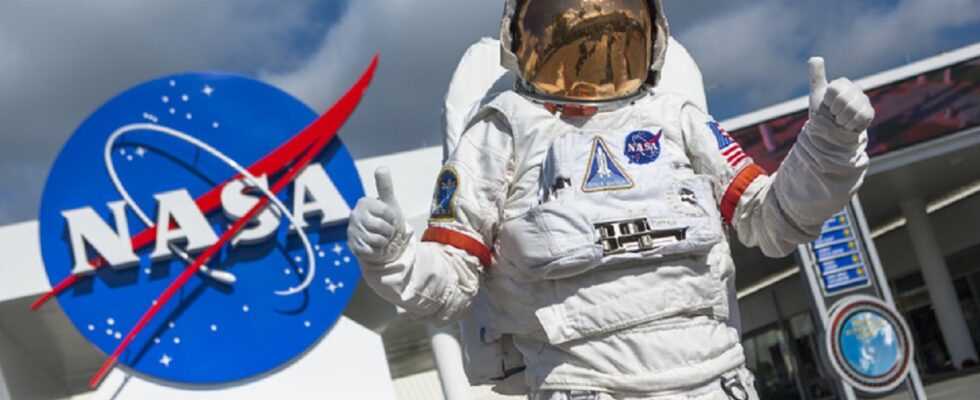NASA announced on Wednesday that it has chosen two companies, Axiom Space and Collins Aerospace, to build its next-generation spacesuits, as those it has used until now celebrate their 40th anniversary. The new spacesuits will usher NASA astronauts into a new era of exploration.
They will indeed be the last suits that astronauts will wear to leave the International Space Station in 2030. These will be the suits that will allow NASA astronauts to walk on the Moon for the first time in half a century. They will also help NASA prepare for possible human missions to Mars.
“History will be written with these combinations,” said Vanessa Wyche, director of NASA’s Johnson Space Center, on Wednesday. Companies Axiom and Collins Aerospace said they hope to be able to demonstrate the suits around 2025. Although the suits are already in development, there are no photos of them yet.
Rental combinations
NASA’s new partnerships with Axiom and Collins Aerospace mark an important step in the US space agency’s efforts to promote a thriving ecosystem. Under the terms of the new agreements, the two companies will retain ownership of the spacesuits and supply them with other spacewalk systems through an “as-a-service” model. These were selected following a call for tenders included in the xEVAS (Exploration Extravehicular Activity Services) contract.
Under this contract, Axiom and Collins will compete to meet spacewalk requirements for various mission orders and missions through 2034. The contract has a combined maximum potential value of $3.5 billion. dollars for all mission orders. In the meantime, NASA encourages its private partners to explore other non-NASA commercial applications for the data and technologies they jointly develop with the agency. NASA will retain the right to use this data and technology within the agency and in future exploration programs.
According to NASA, creating these kinds of incentives for the private sector will encourage innovation and competition, theoretically lowering costs for the space agency. “We’ve been talking about public and private partnerships for many years,” says Axiom Space CEO Michael Suffredini, who served as NASA’s ISS program director from 2005 to 2015. “I think that’s really the one of the first cases where it benefits both parties”.
New major players in the conquest of space
Axiom was created with the aim of building a commercial space station to replace the ISS once it is decommissioned. The company recently flew the first-ever fully private crew to the ISS. “Axiom Space needs a space suit,” explained Suffredini. “We already have a number of customers who would like to go on a spacewalk, and we had planned to build a spacesuit as part of our program.
“It’s fantastic to have a partnership that allows us to benefit from NASA’s years of experience and all the work they’ve done to advance the design to the current stage…so that we can both use the combination to meet our needs.”
NASA’s current spacesuit “has been the agency’s workhorse for 40 years,” said Dina Contella, ISS program operations integration manager at Johnson Space Center. Of the 250 spacewalks NASA and its partners have conducted aboard the space station, 169 have been with the existing spacesuit. “Spacesuit technology, of course, at 40, is getting old,” she said. “We would like to try new and future technologies, and we would like to do so in an affordable way.”
NASA still has control
NASA is still responsible for setting the technical and safety standards to which the spacesuits will be built. The US space agency has also set certain requirements for its new partners. These will need to fit a wide range of human bodies, from the fifth percentile of women to the 95th percentile of men.
Axiom and Collins Aerospace are trying to design suits that are modular and require as few parts as possible. Both companies must also interface with all kinds of vehicles and equipment that will be used in space, and they must offer the greatest possible mobility.
“We often call the spacesuit the smallest spacecraft in the world…but it shouldn’t feel like a spacecraft,” says Dan Burbank, senior technician at Collins Aerospace. “We want to create an immersive environment that gives the crew maximum mobility, that complements a crew member’s abilities rather than constrains them.”
Source: ZDNet.com
